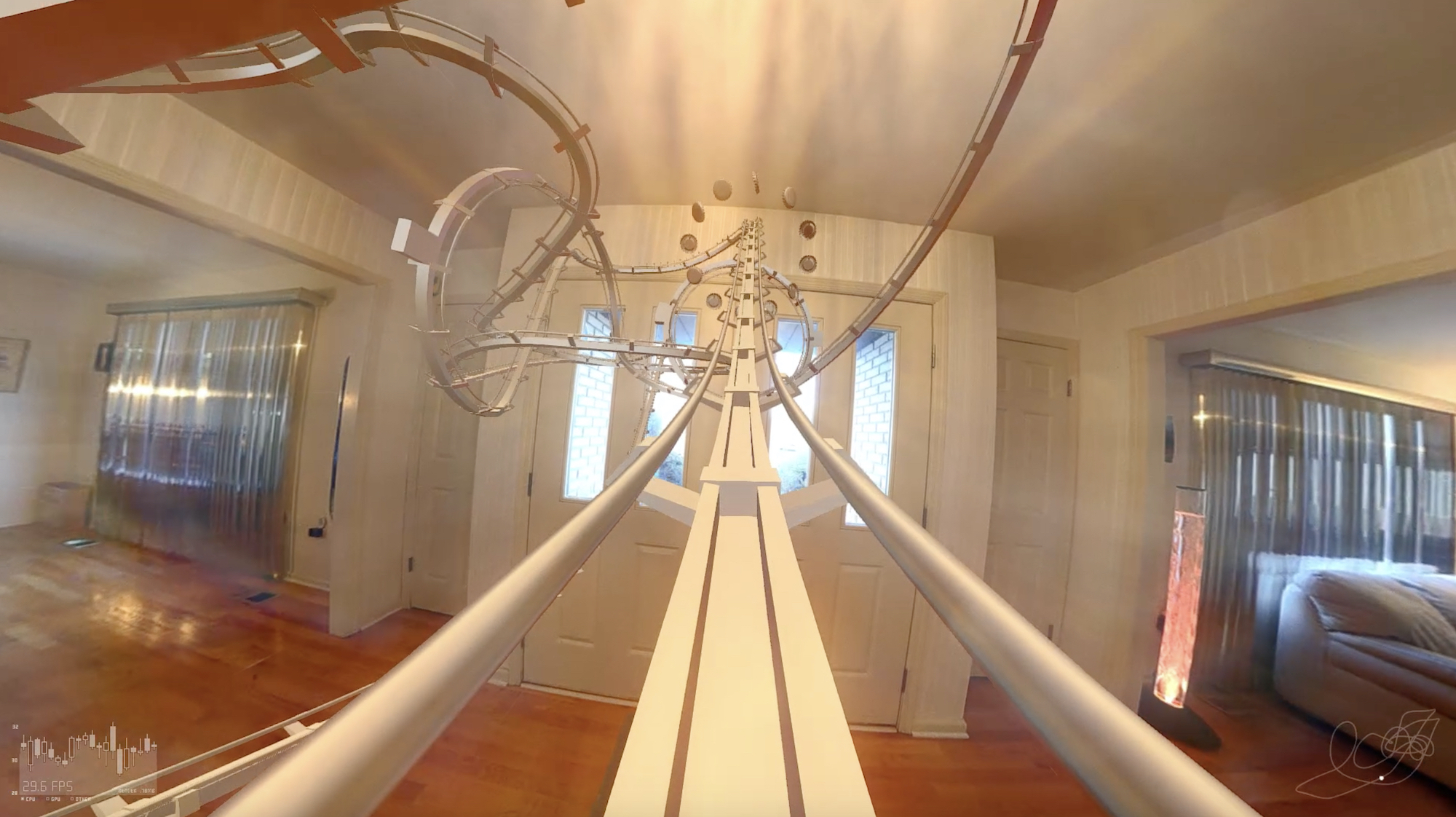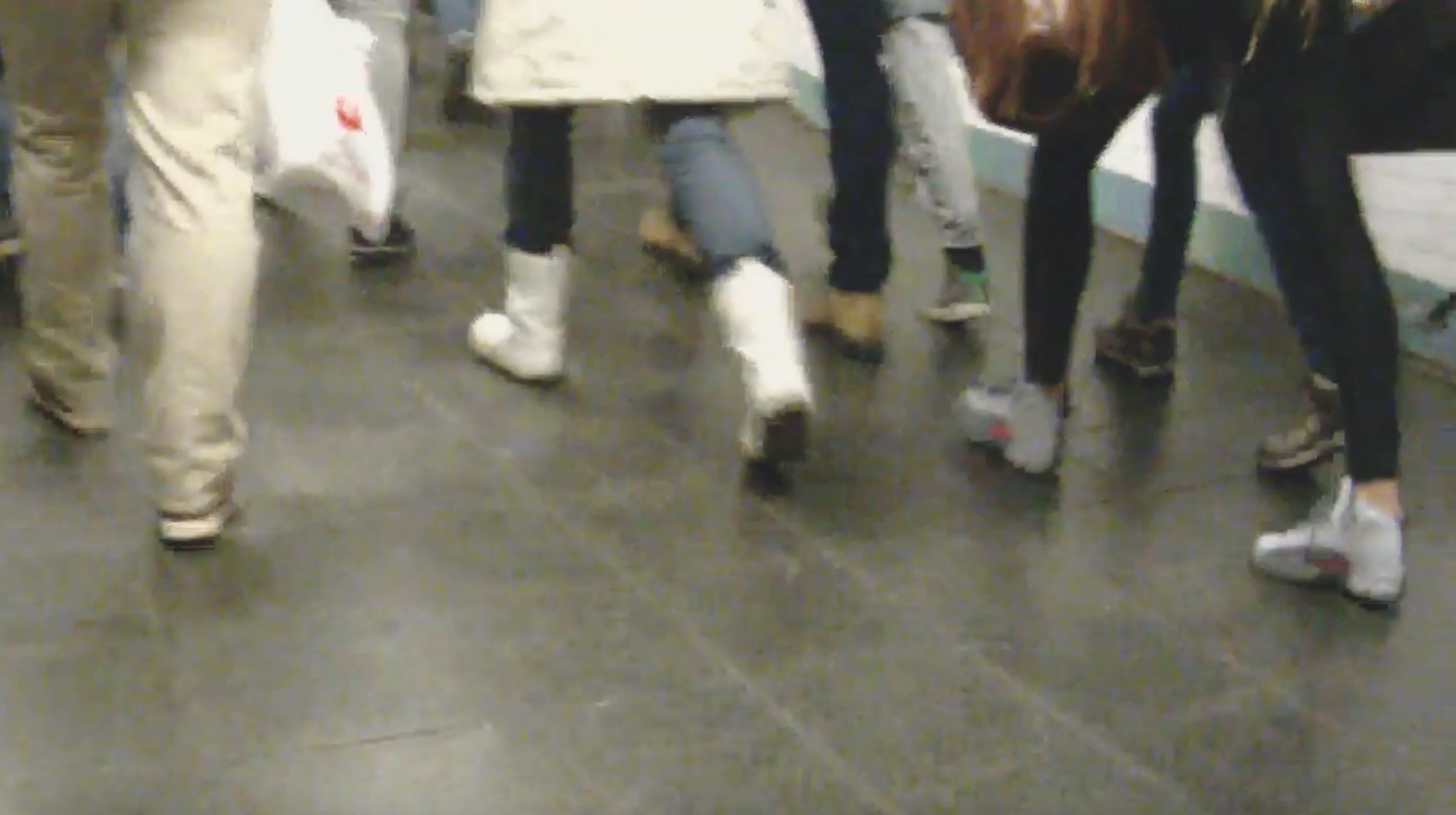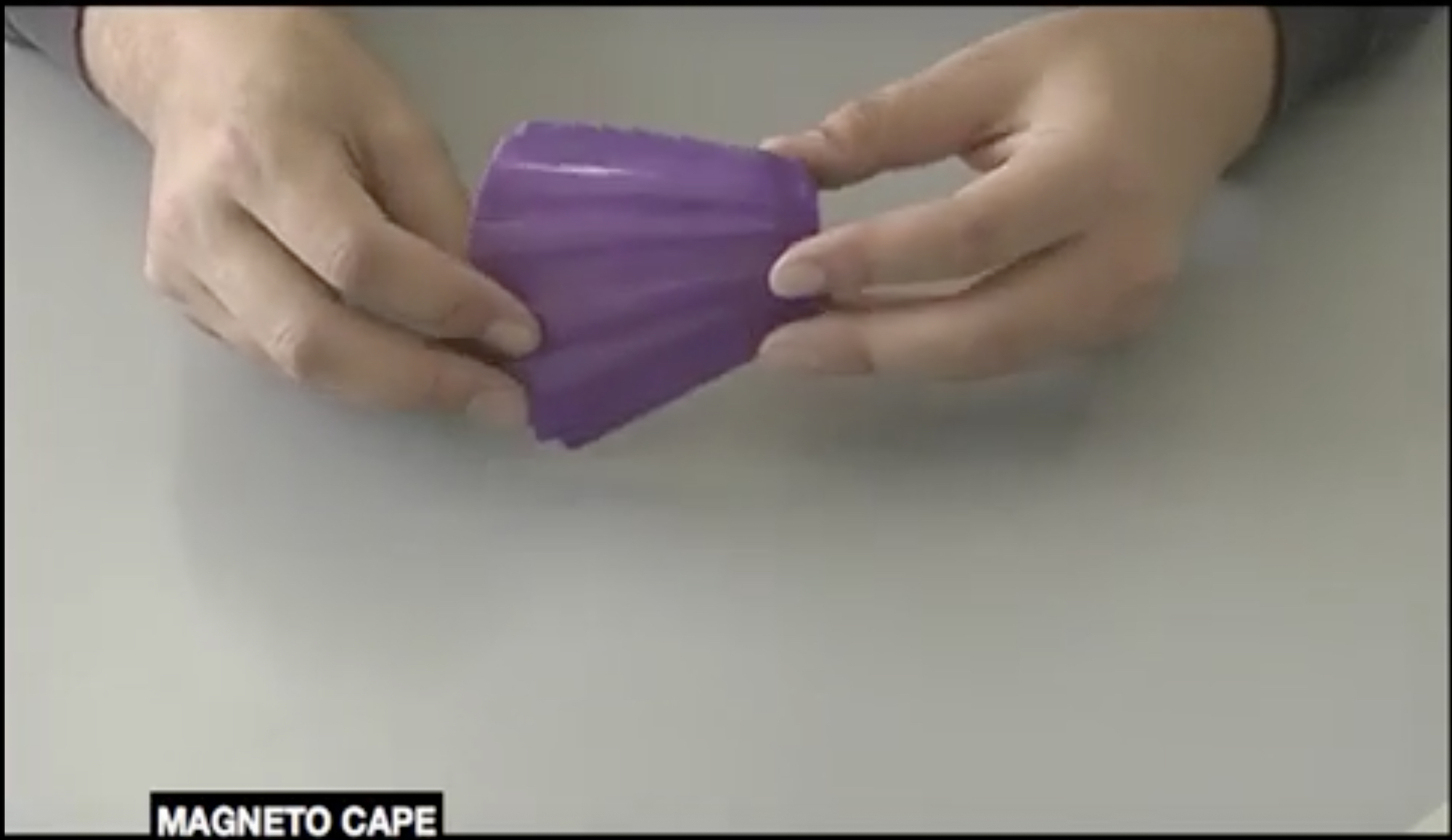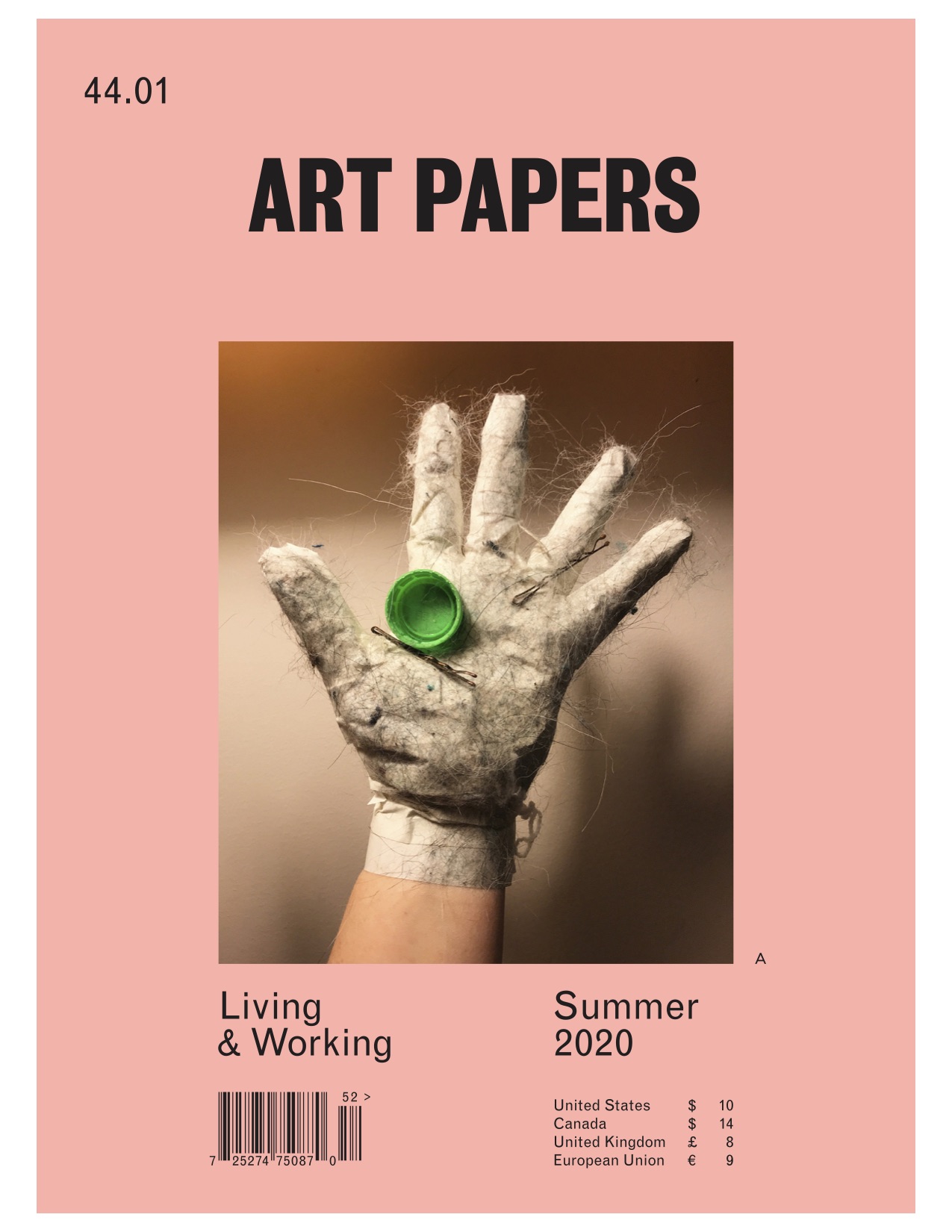FOCUS GROUP II: PARATEXT
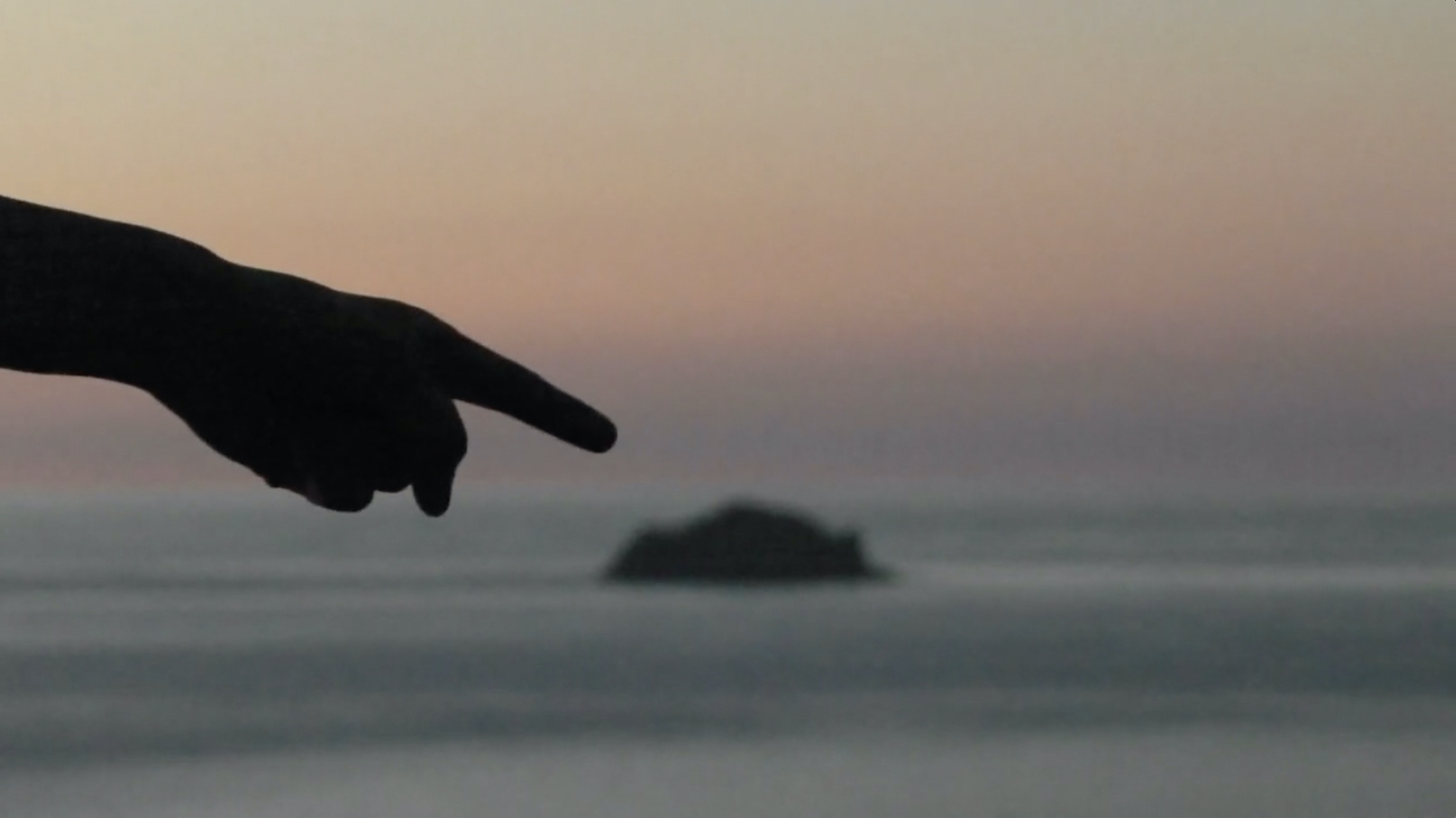
Beth Collar, The Island of the Dead (still), 2014 [courtesy of the artist and von ammon co., Washington DC]
Share:
In the spring of 2020, galleries, museums, and DIY spaces, jarred by the global pandemic, found themselves forced to “move” art intended for the corporeal world hastily to the digital realm. The highly social experience of exhibition openings became highly private, and flat. Pixelated presentations of art quickly multiplied in number and complexity. Previously underused software and platforms designed to present gallery walk-throughs were suddenly in hot demand, and the learning curve for successful engagement of an audience confined, collectively, at home proved wildly, anxiously steep.
On April 18, 2020, in the thick of this feverish reshuffling, Washington DC-based von ammon co. released an online group exhibition of video work titled FOCUS GROUP II: PARATEXT. The exhibition celebrates the freedom and weirdness of the virtual world and presents “a paean and prologue to all that has been indefinitely postponed.” A notable take from the press release: “Containment was always the great contingency when [the videos] were included. Something we remember: putting sullied headphones over our skulls with impunity. Ensconcing a section of prized floorspace with sheetrock to muffle the haunt of a video loop.”
The point being that, at least now, the sullied headphones are our own, and no sheetrock is necessary—just Internet and a screen. The experience is like that of flipping through carefully curated television channels without a TV Guide. How can a digital exhibition feel so pre-Internet?
Tabor Robak, Algos (still), 2013 [courtesy of the artist and von ammon co., Washington DC]
Minimalist in its presentation almost to the point of disdain, FOCUS GROUP II had no introductory or contextualizing “wall” text, only a downloadable checklist. Just fourteen videos, fourteen artists. Fourteen small rectangles against a stark white background, separated from each other by half an inch worth of pixels. As the title suggests, many of the works seem to skirt the edges—of reality, of sanity, of the Internet. A collection of cinematic footnotes and asterisks, the videos together form an oddly cohesive group.
You can play them in any order (or all at once, for that matter), but Violet Dennison’s HIDE (Succession) is the seemingly suggested entry point. Recorded during walks through a crowded subway, 2016–2020, with a Patrol Eyes police body camera, the lo-fi footage is accompanied by narration that muses we are “consumed by the tragedy of survival” and offers poetic observations such as “bacteria is a careless creature.” Whether Dennison’s compilation is a direct response to the virus or an early, prescient meditation on the future of humanity remains unclear. Either way, it’s an eerie, comfortless beginning. More than that, it sets the unnerving voyeuristic tone that follows the exhibition: the unshakable feeling of peering through someone’s basement window.
Violet Dennison, HIDE (Succession) (still), 2016-2020 [courtesy of the artist and von ammon co., Washington DC]
Or, perhaps more accurately, peering into someone’s laptop. In Tony Hope’s untitled work, desktop photos of venomous snakes are opened beside a YouTube video of Stone Cold Steve Austin. The climactic moment comes when photos are revealed to show venom extracted and added to a 5-hour energy drink. In Parker Ito’s #6, Kanye West’s “Bound 2” music video (the much parodied one wherein Kanye and Kim appear to have sex while riding a motorcycle) is chaotically projected on walls surrounding a cartoonish avatar in a top hat. Hope’s video feels deeply private, and the experience of viewing the work on a laptop adds to the sensation of having accidentally hacked in. Ito’s is even more internal and intrusive. Are we in Ito’s brain? What is this boppy limbo?
A strange thing: the ability to pause. We can perhaps assume that these videos, under normal circumstances, would loop. The viewer may stay to watch an entire video or only a few seconds of it before moving on. As the press release reminds us, a video exhibition with this many works would inevitably be a cacophony of noise. FOCUS GROUP II allows the awkward power of choice, and the luxury of coming and going at one’s leisure.
Jacob Kassay, Untitled (still), 2017 [courtesy of the artist and von ammon co., Washington DC]
Clearly, several of the videos are not meant to be consumed in their entirety—and that’s fine. You don’t have to. For example, Jacob Kassay’s untitled work, in which a person (presumably Kassay) handles and identifies old toys for an hour and a half. Specifically, pieces of toy weapons, or pieces from toy warriors—a Ninja Turtle sword, Thor’s hammer, and, comically, Arnold Schwarzenegger’s pants from Commando. There is no sound in Kassay’s video, only subtitles. There appears to be another person talking to Kassay as he sorts though the toys, but we do not seem anyone else. In fact, we do not see any person—only a pair of hands gently handling the memorabilia. It’s nostalgic, maybe, but also vaguely apocalyptic. Where are the bodies? Relics of war and conflict seem to be all that remain. Similarly, Tabor Robak’s Algos—a 16-minute virtual rollercoaster that zooms through warehouses, churches, stairwells, living rooms, and restaurants—also proves notably devoid of humans.
Not all the works in FOCUS GROUP II are so dystopian. Alex Bag’s Le Curieux et Cruel Vie Du La Salmonellapod, from 2000 (an impossibly long time ago), is a welcome addition. In this quasi-nature-puppet show, we learn of and witness the “Salmonellapod,” a funny creature from a violently matriarchal animal species. It’s Cronenberg meets . But underneath the absurdity and gore, Bag questions the reasoning of the common alt-right refrain “it’s biology” so often used to silence and oppress women and queer people. Other exceptions to the stark coldness permeating much of the exhibition are Wickerham & Lomax’s Whales SPF 50, an electric exploration of metamorphosis, Black buoyancy, and resistance; and Darren Bader’s , a surreal fantasy of Elton John and Billy Joel lost on the open water, playing duets until the end of time.
Alex Bag, Le Cruel et Curieux Vie Du La Salmonellapod (still), 2000 [courtesy of the artist and von ammon co., Washington DC]
Still, if the exhibition is in part a response and “prologue” to the future, nothing about it seems particularly reassuring. Overall, many of the works take on a cold detachment and a disregard toward the viewers feelings. Beth Collar’s 2014 Island of the Dead is a half hour of the repeated line: “Look at that rock over there. It’s the Island of the Dead.” And then, slightly but significantly different: “Look at that rock over there. It’s the island where all the dead go.” A location becomes a destination. The blurry image of an isolated rock in the middle of a lavender sea, slowly fading to black even as the voice implores us to look, In another video a few rows down, Kayode Ojo’s jumpy, repetitive clips of the life and violence of a young neo-Nazi are also deeply unsettling, albeit in a very In Collar’s video, as the sun sets on the faraway island where the dead—meaning, eventually, all of us—go, the scene is filled with a queasy existential dread. In Ojo’s, it’s the more immediate existential threat of fascism.
And then, there is this cruel addition: Helmut Lang’s something to think about, a 55-second video of a white curtain rising to reveal a black screen, and, of course, our own faces. The silent horror of a mirror. If the other glowing rectangles are like channels depicting the lives, dreams, and nightmares of others—channels we can switch off at will—Lang’s silent, reflective screen shows what remains when the show is over: us, alone, at home.
***
This review originally appeared in print in ART PAPERS Summer 2020 // Living & Working.
EC Flamming is a writer living in Atlanta. She has written for ART PAPERS, Another Gaze, BURNAWAY, ArtsATL, Paste, and more.
